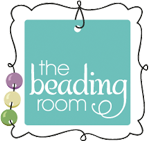Crystal vs. Cubic Zirconia-Is There a Clear Winner?
You are probably surprised to see us comparing Cubic Zirconia beads to Crystal beads. Most comparisons of CZ are made to diamonds because of they are meant to be a simulated replacement for the natural substance. But as beaders many of you will have seen CZ beads cut very similarly to the better-known crystal ones. And it poses several questions-Is crystal worth the extra price? Which is more durable? Which is more attractive? When should I use crystal, when should I use Cubic Zirconia?
Let’s start by looking at the molecular structure of both substances (don’t stop reading, I promise I won’t make it too complicated:)). Cubic Zirconia is the cubic crystalline form of zirconium dioxide (ZO2). What does this mean? Well, it is hard, optically flawless and appears almost exactly the same as a high quality diamond would. It is relatively inexpensive to produce and can be made into a variety of colors. Crystal, as us beaders know it, isn’t actually crystal and is so ‘misnamed’. It is in fact leaded glass, which lacks a crystalline structure (so isn’t technically ‘crystal’). Lead oxide is added to the molten glass to raise its refractive index (give it more sparkle) and lower its working temperature.
The whole process of producing crystal from start to finish is somewhat more costly. But the price really depends on the size and cut of stone. Some crystal beads can be more affordable their the Cubic Zirconian counterparts, especially the larger sized ones. The higher quality crystal has more lead (so it is sparklier), but is much more difficult to cut-hence the price tag. Shop around, discover and compare how they weigh up against each other.
So, as a substance, which is more durable? Crystal beads are usually hand or machine cut to shapes which include many facets, improving the materials sparkle and gleam. To do this effectively, lead is added to soften the glass when it is molten. The highest quality crystal can have as much as 35% lead. So, although the lead is really what gives the crystal its character, it also makes it more fragile than the Cubic Zirconia. This is why crystal is usually set using adhesive, not ‘pronged’ settings. Cubic Zirconia can be set into intricate settings and used more like a gemstone.
And the most important question as a jewelry maker/beader-Which is the prettiest? It is a tough question to answer. Crystal has this warm, light reflective quality that just can’t be beat. On the other hand, Cubic Zirconia can have an infinite amount of cuts and facets, giving the substance a certain depth and visual texture. They both have their own charm I suppose!
What should you use and when? Personally, I have always used crystal beads and I have never had a ‘smash’ with a made product. I have however had beads go in the making process, when forcing them onto wire just a bit too heavy, or when doing a wrapped loop and catching the edges with my pliers. I suppose highly worked items could benefit from the use of Cubic Zirconias. I also like the
look of Cubic Zirconias in settings. Unless the crystal you are using is foil backed, the whole point of crystal is lost because the light cannot reflect as it should.
I think it boils down to whether you are a ‘romantic’ beader or a ‘practical’ beader too- do you sacrifice a few breakages for the joy of saying your piece is made of Lead Crystal? Or do you go for the regularity, strength and durability of the Cubic Zirconia? Hmmmm…
(Originally published November 20, 2009)
